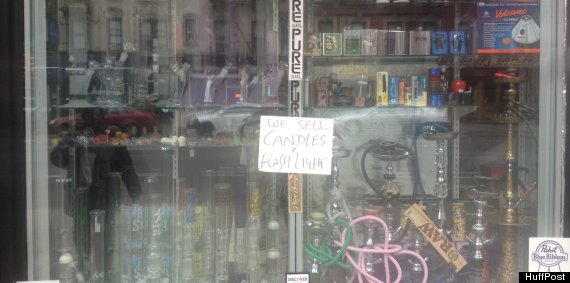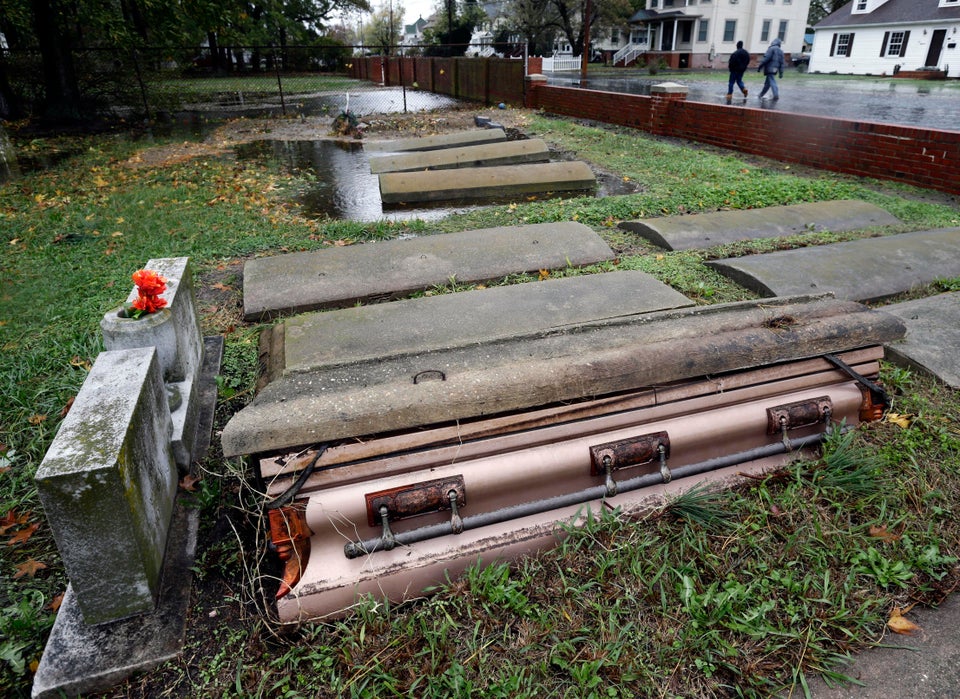NEW YORK -- When Apple's iPhone cannot find a cell signal, the phone's status bar displays -- in lieu of the typical 3G or 4G line of bars indicating signal strength -- a message of hope and patience: "Searching..."
That is a status -- "Searching..." -- that could well describe the scene in the city in the days after the storm, as throngs of New Yorkers wandered dazed and aimless through the streets without the assistance of their typical go-to electric lifelines.

Throughout the West Village, East Village, Greenwich Village and Lower East Side, all of which are without power and mostly without cellular coverage, searchers could be seen poking about. They searched for grocery stores, restaurants and coffee shops, without the aid of a maps app or Yelp to guide them to an open establishment. They searched for candles and flashlight batteries to serve them at night, unwilling or unable to eat smartphone battery by using their flashlight application. They searched for working outlets and charging stations to juice their phones, and after they had found those, they searched for elusive reception, snaking about the sidewalks with their phone antennas pointed to the sky, as though making an offering to the benevolence of the Cell Phone Gods.
Hurricane Sandy has left millions in the Northeast without power or cellular reception, including densely populated neighborhoods in New York City: Lower Manhattan below 42nd Street is completely without electricity, and the FCC has announced that 25 percent of cell towers have been wiped out.
The resultant landscape in downtown New York City is populated by a community accustomed to navigating by smartphone now learning to get around and adapt without. It's not just a city without traffic lights or hot coffee, it is one whose inhabitants have lost their customary tethers and security blankets.
Indeed, in post-Sandy Manhattan, devices that the smartphone had supposedly made obsoleted now find themselves in high demand. A newsstand on Astor Place hung a makeshift sign that proclaimed "We have flashlights!" -- a function long ago subsumed by the LED flash on most camera-phones. Gawkers snapped photos with digital cameras, saving battery on their smartphones for more essential functions. Luggage-toting pedestrians wound their way northward -- where the power had not lapsed, and cell coverage remained strong -- with paper maps, long a giveaway of tourists and out-of-towners.

A local head shop has switched gears, now advertising candles and flashlights.
Most strikingly, though, the storm has enabled the return of the long-ignored public pay phone. On Tuesday, a line of the disconnected waited to use a payphone in the West Village, some of them making what was surely their first pay phone call in many years. In the East Village, a young boy tugged on his mother's sleeve in delight as change returned to the coin slot after an unanswered call. On Broadway below Union Square, two men in New York Giants sweatshirts operated a payphone in tandem: One dialed the phone while the other read out the number from a cell phone, the device in his hand reduced to a $700 address book.
Indeed, the return of the pay phone seems to have hit a nerve, having become the symbol of how the hurricane has launched New Yorkers back into the technological past. The tech site Gizmodo dedicated a short post to pay phones titled "Payphones Finally Good for Something After 10 Year Hiatus." Several outlets published photos of New Yorkers waiting in line to use a pay phone, an unthinkable 2012 occurrence just a week ago.
This is just months after New York announced a pilot program to convert several pay phones around in the city into free WiFi hotspots. The move was widely praised as a successful effort to transform worthless technology -- akin to "pagers, beepers, and busy signals," as CNN's Doug Gross put it in July -- into something with actual utility.
The Disneyland-like waiting lines that have popped up in New York show it might not be time to start uprooting all of those pay phones just yet.
Usually, when we talk about a smartphone becoming obsolete, we mean that a newer version has been released, making the technology available on the current model old-fashioned or quaint in comparison. In this case, however, we're seeing smartphones become obsolete due to a total lack of utility outside of an oversized wristwatch -- and one that, it must be said, cannot tell the time for very long.
Until the power comes back, and the towers begin beaming cell signals again, the gadgets and devices that had become nothing more than popular apps in the App Store will continue to prove their value in the real world, in real hands. And as lower Manhattanites come to terms with a post-smartphone landscape, they will continue to grope, to grapple, to seek and to search.
*************************
The Huffington Post is eager for insights from our community, especially people with experience in power, infrastructure and engineering, on the adequacy of emergency preparation in advance of Hurricane Sandy, and the degree to which past disasters have informed adequate planning and construction. Please send a note to sandytips@huffingtonpost.com with insights and suggestions for the important questions that need to be asked of relevant private sector and government officials, and point us toward stories that need to be pursued.
